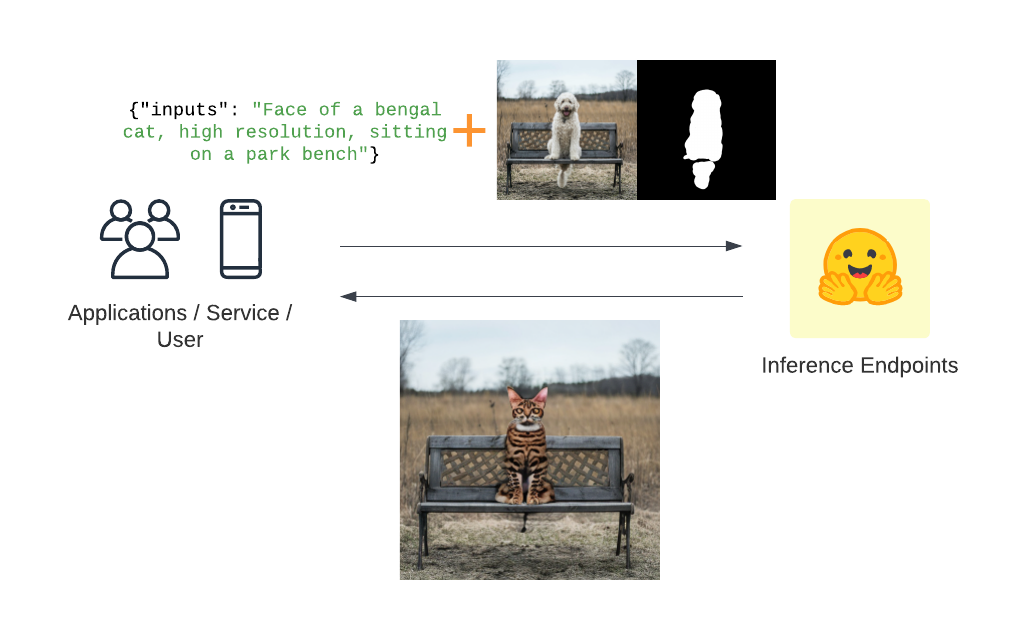metadata
license: openrail++
tags:
- stable-diffusion
- stable-diffusion-diffusers
- text-guided-to-image-inpainting
- endpoints-template
thumbnail: >-
https://huggingface.co/philschmid/stable-diffusion-2-inpainting-endpoint/resolve/main/Stable%20Diffusion%20Inference%20endpoints%20-%20inpainting.png
inference: true
Fork of stabilityai/stable-diffusion-2-inpainting
Stable Diffusion is a latent text-to-image diffusion model capable of generating photo-realistic images given any text input. For more information about how Stable Diffusion functions, please have a look at 🤗's Stable Diffusion with 🧨Diffusers blog.
For more information about the model, license and limitations check the original model card at stabilityai/stable-diffusion-2-inpainting.
This repository implements a custom handler task for text-guided-to-image-inpainting for 🤗 Inference Endpoints. The code for the customized pipeline is in the handler.py.
There is also a notebook included, on how to create the handler.py
expected Request payload
{
"inputs": "A prompt used for image generation",
"image" : "iVBORw0KGgoAAAANSUhEUgAAAgAAAAIACAIAAAB7GkOtAAAABGdBTUEAALGPC",
"mask_image": "iVBORw0KGgoAAAANSUhEUgAAAgAAAAIACAIAAAB7GkOtAAAABGdBTUEAALGPC",
}
below is an example on how to run a request using Python and requests.
Run Request
import json
from typing import List
import requests as r
import base64
from PIL import Image
from io import BytesIO
ENDPOINT_URL = ""
HF_TOKEN = ""
# helper image utils
def encode_image(image_path):
with open(image_path, "rb") as i:
b64 = base64.b64encode(i.read())
return b64.decode("utf-8")
def predict(prompt, image, mask_image):
image = encode_image(image)
mask_image = encode_image(mask_image)
# prepare sample payload
request = {"inputs": prompt, "image": image, "mask_image": mask_image}
# headers
headers = {
"Authorization": f"Bearer {HF_TOKEN}",
"Content-Type": "application/json",
"Accept": "image/png" # important to get an image back
}
response = r.post(ENDPOINT_URL, headers=headers, json=payload)
img = Image.open(BytesIO(response.content))
return img
prediction = predict(
prompt="Face of a bengal cat, high resolution, sitting on a park bench",
image="dog.png",
mask_image="mask_dog.png"
)
expected output

